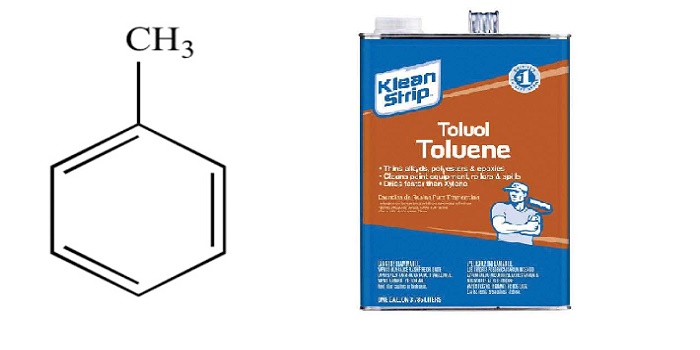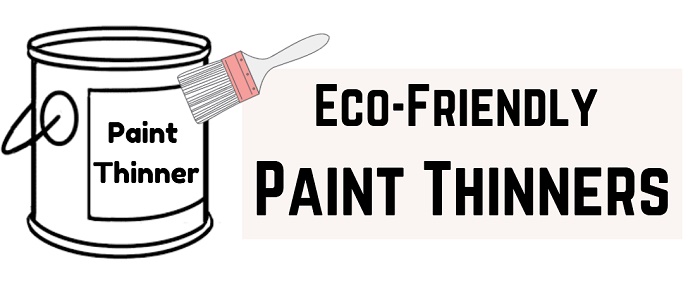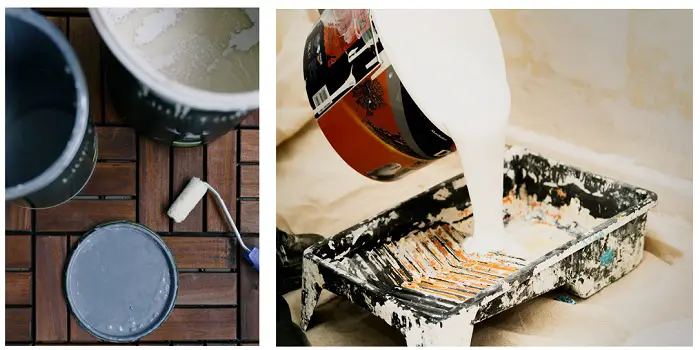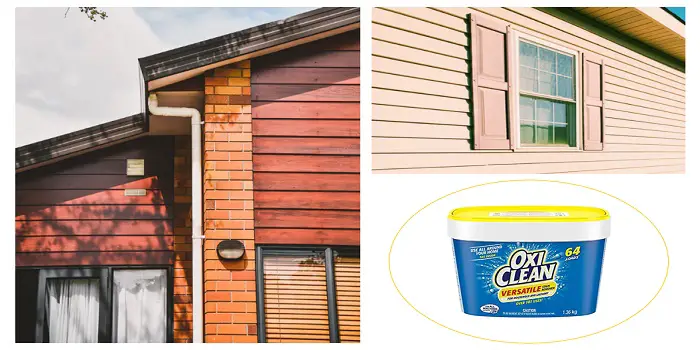
In the increasingly complex world of varying industries, it is inevitable that several chemicals and compounds will be used across a wide variety of products but are unrecognizable to most people.
One example of this is the aromatic hydrocarbon toluene that has become a staple in several products in nearly 200 years of human use.
Regardless, there’s a wealth of information that is useful to anyone that’s interested in learning more about this versatile substance.
What's Here in the Article:
What is Toluene?
As stated before, the basic form of toluene is an aromatic hydrocarbon that has also been known as toluol, phenyl methane, anisen, and methylbenzene.
If you’re familiar with paint thinners, you’re likely familiar with the core smell of toluene, as it is an insoluble, colorless liquid used often to produce such thinners.
Toluene is a peculiar compound due to its incredibly high boiling point of 110⁰ C and its low melting point of -93⁰ C.
In nature, it has been found within the tolu tree, which is a common form of balsam found throughout South America.
Most often, these types of trees are found throughout the countries of Venezuela, Peru, and Colombia in great numbers.
Additionally, it can also be found in crude oil and has been produced as a byproduct during the manufacturing process of both coke (from coal manufacturing/treatment) and styrene.
Finally, it is also a great solvent, being able to dissolve a number of tough substances. This is quite logical and explains its extensive presence within paint thinners.
History
Toluene as a natural substance existed in crude oil long before it was first distilled and discovered in 1837, though crude oil was only hardly recognized at this point.
The compound was first officially discovered by a Polish chemist named Filip Walter through the distillation of pine oil.
Four years later, Henri Étienne Sainte-Claire Deville isolated the hydrocarbon through a similar process from the balsam of tolu, which he thought bore a great resemblance to benzene and Walter’s ‘rétinnaphte,’ as he called it.
Two years after this, in 1843, Jöns Jacob Berzelius again renamed it toluin.
It was once again renamed in 1850 to the modern toluene when Auguste Cahours used a distillate of wood to isolate the same hydrocarbon, which, again, resembled Deville and Walter’s hydrocarbon.
What is Toluene Used For?
It would be almost more appropriate to ask what toluene isn’t used for today. It has become a staple in several industries, from solvents to syrups.
Here are some of the major products that utilize toluene extensively.
1- Solvents – toluene has the perfect composition to act as a solvent for disinfectants, chemical reactants, sealants, and of course, paint thinners.
2- Agriculture – toluene is used as a pesticide, helping fend off roundworms and hookworms with ease.
3- Cement – on its own, toluene serves a major purpose in forming cement for fine polystyrene kits.
These cement are mostly used to seal joints in concrete, wood, metal, or masonry buildings.
4- Coolants – due to their ability to transfer heat efficiently, it also performs well as a coolant.
Nuclear reactor system loops often utilize it for this reason.
5- Fuels – first utilized by the car manufacturer Honda, toluene is able to increase the octane number of gasoline and fuels.
The higher the octane number, the better the energy efficiency ratio is.
6- Foam – polyurethane foams are largely produced through the use of diisocyanate.
Better known as TDI (toluene diisocyanate), this can only be synthesized by using toluene.
7- Biology – biochemical experiments often utilize toluene during medical lab experiments, especially (recently) in breaking red blood cells down to extract hemoglobin.
8- Explosives – TNT (trinitrotoluene) is produced through a synthesis utilizing toluene, which is logical given TNT’s name.
9- Recreation – this sector may be a surprising one to find on this list, but toluene finds it for recreational purposes as an inhalant that causes a pleasing, euphoric effect.
10- Coca-Cola – older forms of this soda still had the cocaine portion of coca leaves when it was produced.
Toluene is useful in isolating and removing cocaine in the final product.
Along with all of these products, toluene is also used in various products and industries, including radiator and correction fluids, fingernail products and cleaners, nylon, dyes, cleansers, spot removers, and benzene.
Health Risks of Using Toluene
Like most other industrial ingredients, toluene does not come without some health risks and warnings that individuals should be aware of while handling it.
It can have distinct toxicological effects on those that come into contact with it through inhalation, direct contact, or ingestion.
Those that inhale toluene may potentially experience an irritable respiratory tract, exhaustion, confusion, fatigue, headaches, euphoria, and some tingling.
Direct contact is easily possible as a vapor and liquid and can cause irritation of the nose and eyes, lacrimation (tear discharge), numbness/tingling of the skin, dermatitis, and loss of color vision.
Finally, ingesting it can have a number of negative effects, generally insomnia, dizziness, pupil dilation, muscle fatigue, hearing loss, loss of appetite, and anxiety.
Realistically, any of these symptoms may be experienced through inhalation, direct contact, and ingestion and are entirely limited to one method or the other.
Bioremediation
There are many negative impacts that toluene can have on the human body as it’s just been laid out.
However, the effects are, fortunately, not permanent through bioremediation, which is the stimulation of microorganism growth through the alteration of their natural environment in the hopes of containing toluene contamination.
Cladophialophora, Exophilia, Leptodontium, Pseureudotium zonatum, and Clasdosporium sphaerospermum are all forms of fungi that have been found so far to reduce toluene’s impacts.
Some bacteria have also proven to be useful in this process being able to absorb carbon and energy from toluene to sustain themselves.

Douglas Becker (aka Painter Doug) has over twenty years of experience as a painter in Adkins, Texas. At present, he resides in Florida with his family.
From painting multi-storeyed houses, condos, and apartments to large commercial buildings and small offices, he had served various customers in areas not only in Adkins but also in Southwest Florida, Sarasota, Naples, and many more. To know more about him check here.




